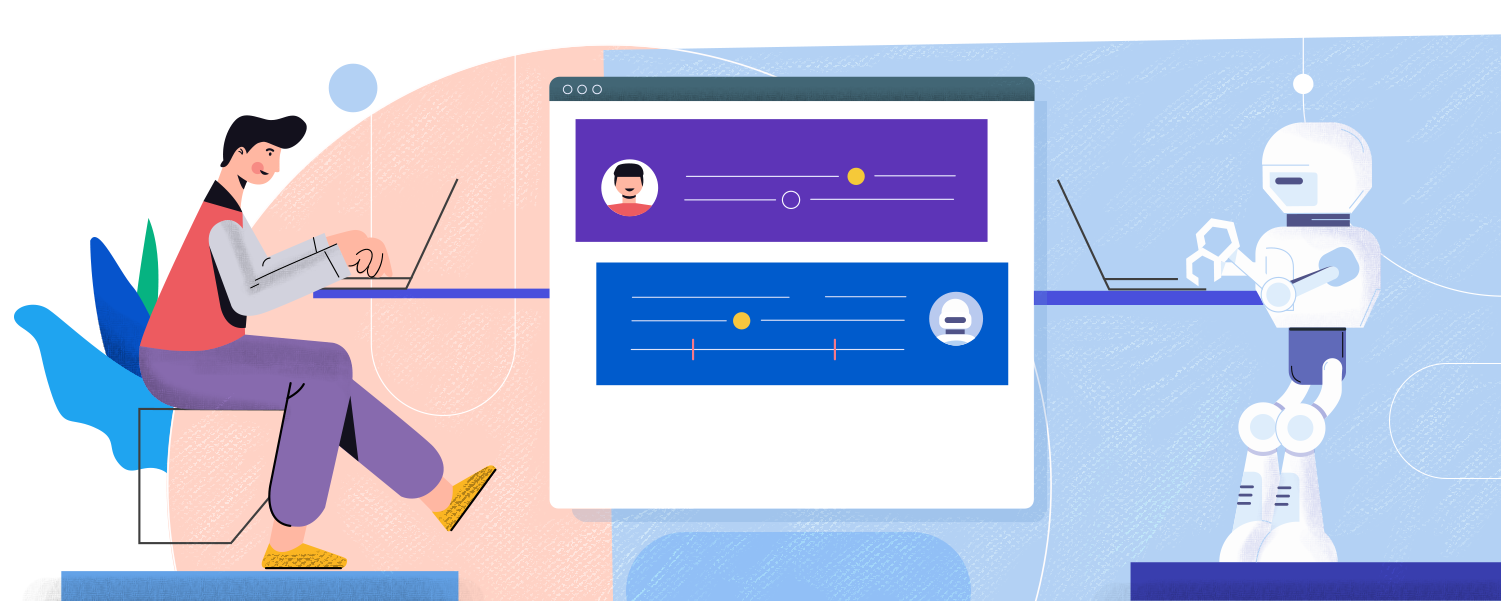Here’s what Emily in Paris taught me about CX
In the show, Emily in Paris, there’s a funny scene between Emily and her roommate Mindy.
Emily is trying to write a letter in French and Mindy, who speaks French well, offers to help. But Emily declines the offer, saying, ‘No thanks, I can do this, my French is ok.’
To which Mindy replies, ‘Ok good to know. Then maybe you’ll want to stop washing your hair with dog shampoo.’

It turns out that Emily’s level of French wasn’t actually quite there yet. She was washing her hair with dog shampoo.
The picture on the shampoo bottle wasn’t meant to evoke the warmth of owing a pet. It was actually a shampoo for dogs.
I laughed long and loud at that. Because that scene mirrored my own life experience.
Six years ago, when I first moved to Germany, I did exactly the same thing. I stood in a grocery store aisle trying to figure out which bottle of shampoo to buy.
And no, I couldn’t guess at the German words on the label with any level of confidence. It was one of many watershed moments.
It’s a humbling experience to reboot your life in a new language.
Put aside cultural assimilation for the moment.
When you don’t know the language it becomes tough to just do daily life stuff like figuring out what buttons to press on the ATM machine or how to correctly fill in the mailing label for a package.
https://www.omnitouchinternational.com/what-can-i-do-with-my-ccxp
There are parallels between rebooting life in a new language and implementing a CX strategy
To successfully reboot my life in German, I went through a number of steps.
And I think there are some direct parallels to the steps I took in my personal life and how I see Clients implement CX in their organizations.
Here goes –
1. My world had changed and if I was going to succeed in it I was going to need to change too (and speak German!)
The CX parallel:
At the heart of so many successful CX strategies is (drum roll)…dissatisfaction.
A realization hat the world has changed and that our organization hasn’t changed with it – or hasn’t changed enough to meet new realities.
Not paranoia.
But a recognition that what’s made us successful up to now isn’t going to make us successful going forward.
If everyone thinks everything is just fine, you don’t see the impetus for change.
2. I set a specific and ambitious vision for my future – I imagined myself speaking fluent German everywhere I went
The CX parallel:
The CX Vision is where it all starts.
 Not the organizational vision though of course the CX Vision must map to the organizational vision.
Not the organizational vision though of course the CX Vision must map to the organizational vision.
Rather a specific and ambitious view of the future that answers this question – what kind of experience do we intend to deliver?
And no, that doesn’t come from senior people meeting in a room to craft pretty words.
Crafting a great CX Vision for the future requires us to artfully blend who we are as an organization – our brand, our value proposition, our financial goals – with what our Customers want and need from us.
Most Clients tell me that they spend six months, sometimes more, doing a deep dive into the world of the organization and the world of Customers to craft their compelling CX vision.
But once that’s done, it becomes the check against which next steps and actions are mapped.
3. I evaluated the gap between my current state (of speaking German) and my desired future state – how big was the gap?
The CX parallel:
Before launching into the CX ‘doing’ it’s helpful to evaluate where you are now.
A strategic gap analysis across all the vital CX competencies includes looking at the current state of domains like VOC, Metrics, Culture and more.
Only through knowing where you are now, can you determine what you’ll need to move forward. And what that roll out might look like.
4. I set my strategy – my plan of action to achieve my vision (of speaking fluent German)
The CX parallel:
 Equipped with my CX Vision (point #2) and my readiness analysis (point #3), I can now set out the short, mid & long term activities needed to move forward.
Equipped with my CX Vision (point #2) and my readiness analysis (point #3), I can now set out the short, mid & long term activities needed to move forward.
Avoid complexity here – remember that short term wins build credibility for longer term wins.
As you progress the impact will increase – Rome wasn’t built in a day – but it was built.
5. I considered how speaking German would improve my life overall – which is the real payoff
The CX parallel:
 I saw a CX Consultant once say, “It’s not about the money…”. And I remember thinking what terrible advice that was.
I saw a CX Consultant once say, “It’s not about the money…”. And I remember thinking what terrible advice that was.
We all operate in the real world. And have a responsibility to our organization to help it do better ‘financially’ or business-wise (I also work with governmental & non-profit organizations as well).
As a CX professional, I need to articulate how the CX work we’re doing (and trying to get others onboard to do) is going to help my organization do better and be better – in real economic terms.
6. I allocated resources into my plan – including time and money
The CX parallel:
Describing and quantifying the specific resources you’ll need is necessary to win budget approval. It’s overly simplistic to just say ‘CX is everyone’s job’ and hope your CX dreams come true. And it’s not about having a huge CX Team (those are rare).
You’ll be asking others to allocate their time and resources too. Don’t ever underestimate that ‘ask’ that you’re making.
7. I set appropriate metrics to track my progress along the way (such as passing the language certification exams)
The CX parallel:
 Metrics inform me of my progress – and keep our CX efforts headed in the right direction,
Metrics inform me of my progress – and keep our CX efforts headed in the right direction,
Of course it’s important to look at all the many metrics and determine which ones support CX, which ones actually damage CX and which ones are function or departmental specific and may not have significant impact on CX.
Choosing and then measuring the right things is one of the most important decisions you’ll help your organizationn make.
And of course you have to take actions based on what your metrics tell you.
I’m not going to get into the ‘Organizations obtain scores and then don’t do anything with them’ discussion in this post.
It’s pretty obvious that if you’ve chosen the right metrics, you make the effort to help them move in the right direction.
8. I shared my vision and progress with my family & friends – to help build a culture of support & accountability
The CX parallel:
It’s amazing how much easier things ‘go’ when everyone is rooting for success – and pulling in the same direction to get there.
When you hear people talking in meetings about what they’ve done or are planning to do to make people’s lives better.
One of my favourite CX people told me that she knew she had been successful when people from around the company started coming to her office to tell them about what they were doing.
As compared to her first couple of years where she spent so much time ‘out in the field’.
Share your CX successes. Share those failures. There’s a teachable moment in nearly any experience.
In closing
 These days I can visit the dentist, buy new eyeglasses and make a dinner reservation in German. I’m not where I want to be with my vision yet – but I’m closer than I was when I started.
These days I can visit the dentist, buy new eyeglasses and make a dinner reservation in German. I’m not where I want to be with my vision yet – but I’m closer than I was when I started.
https://news.harvard.edu/gazette/story/2010/04/words-worth/
It will be the same for your CX work too. Your successes will begin to accumulate. And people in your organization will come to you for advice – perhaps one of the best signals ever that you’re on the right track.
So thanks Emily in Paris for that resonant moment with the shampoo bottle – and for helping me consider lessons around Customer Experience.
Thank you for reading!
 I appreciate the time you took to read this. And if you’d like to follow along with our articles and other information just leave your email address in our contact form!
I appreciate the time you took to read this. And if you’d like to follow along with our articles and other information just leave your email address in our contact form!
Daniel Ord
www.omnitouchinternational.com






 But there are a number of great lenses you can use to review your existing email writing and improve.
But there are a number of great lenses you can use to review your existing email writing and improve.

 Daniel
Daniel






 That happens when the author of the article positions the company they’re describing in one of two ways:
That happens when the author of the article positions the company they’re describing in one of two ways: With her usual pragmatism she told me –
With her usual pragmatism she told me –


 I think that the biggest benefit to earning a professional credential is the journey you take and the people you meet along that journey.
I think that the biggest benefit to earning a professional credential is the journey you take and the people you meet along that journey. Leadership is the combination of skills, knowledge and experience that enable a person to inspire others to accomplish a shared goal.
Leadership is the combination of skills, knowledge and experience that enable a person to inspire others to accomplish a shared goal. A big part of Customer Experience involves working across functional boundaries. If you’re in a formalized CX function that’s pretty clear already.
A big part of Customer Experience involves working across functional boundaries. If you’re in a formalized CX function that’s pretty clear already. Ask not what your country can do for you, but what you can do for your country.
Ask not what your country can do for you, but what you can do for your country.


 Formal living rooms may sound old fashioned – but they’re still around.
Formal living rooms may sound old fashioned – but they’re still around. For a University Contact Center, the Agents were instructed to immediately redirect the Caller to the university website if it turned out that the information was available there.
For a University Contact Center, the Agents were instructed to immediately redirect the Caller to the university website if it turned out that the information was available there.  I bet you can imagine what those Agents sounded like when we listened to the calls. Yup that’s right.
I bet you can imagine what those Agents sounded like when we listened to the calls. Yup that’s right.

 In a Keynote Speech, the scenario is obviously different. You have perhaps 20 minutes – 40 minutes with hundreds of folks in attendance.
In a Keynote Speech, the scenario is obviously different. You have perhaps 20 minutes – 40 minutes with hundreds of folks in attendance. While it’s true that Customer Service is a subset of Customer Experience – it’s an important subset for some and a critical subset for others.
While it’s true that Customer Service is a subset of Customer Experience – it’s an important subset for some and a critical subset for others.




